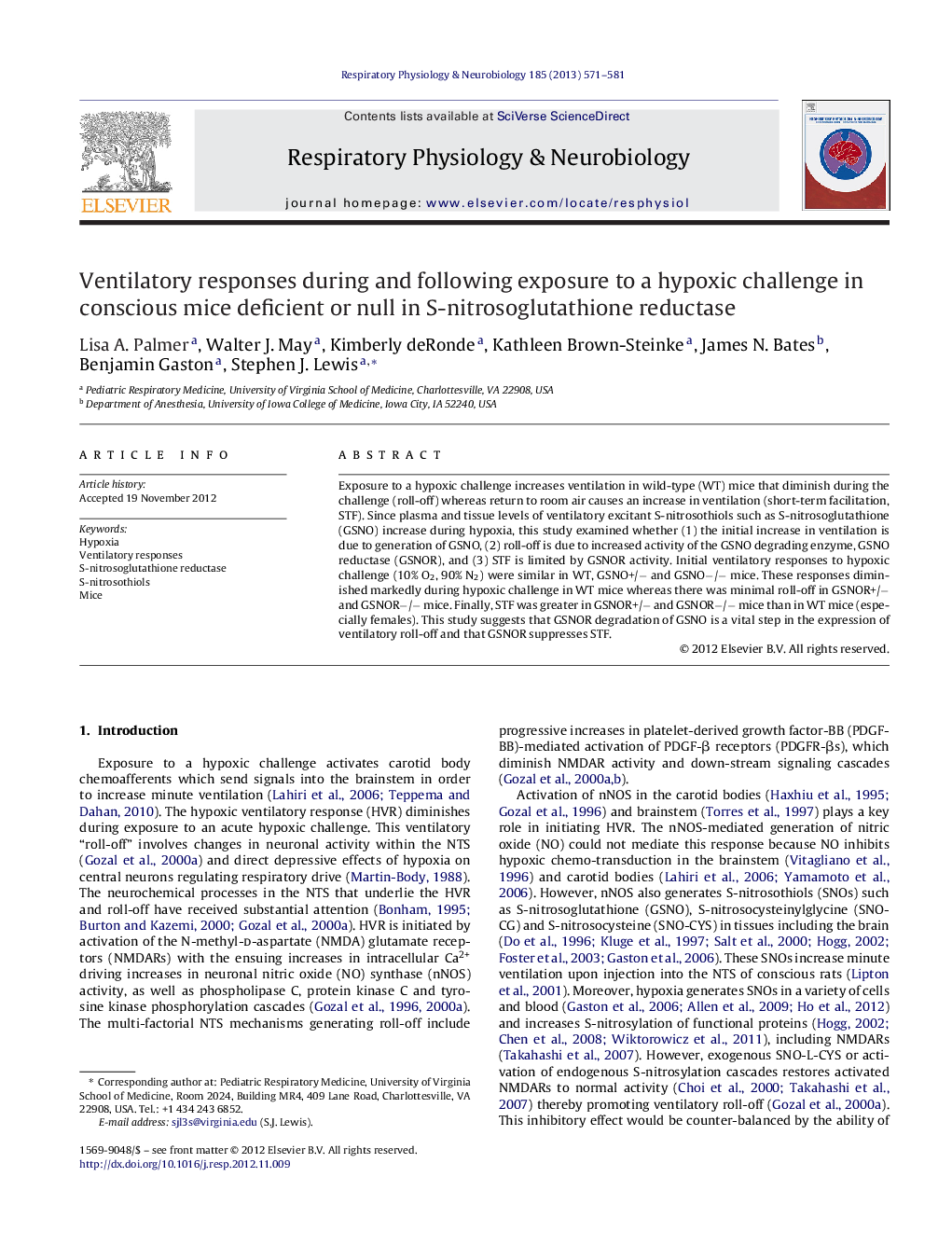| Article ID | Journal | Published Year | Pages | File Type |
|---|---|---|---|---|
| 5926255 | Respiratory Physiology & Neurobiology | 2013 | 11 Pages |
Exposure to a hypoxic challenge increases ventilation in wild-type (WT) mice that diminish during the challenge (roll-off) whereas return to room air causes an increase in ventilation (short-term facilitation, STF). Since plasma and tissue levels of ventilatory excitant S-nitrosothiols such as S-nitrosoglutathione (GSNO) increase during hypoxia, this study examined whether (1) the initial increase in ventilation is due to generation of GSNO, (2) roll-off is due to increased activity of the GSNO degrading enzyme, GSNO reductase (GSNOR), and (3) STF is limited by GSNOR activity. Initial ventilatory responses to hypoxic challenge (10% O2, 90% N2) were similar in WT, GSNO+/â and GSNOâ/â mice. These responses diminished markedly during hypoxic challenge in WT mice whereas there was minimal roll-off in GSNOR+/â and GSNORâ/â mice. Finally, STF was greater in GSNOR+/â and GSNORâ/â mice than in WT mice (especially females). This study suggests that GSNOR degradation of GSNO is a vital step in the expression of ventilatory roll-off and that GSNOR suppresses STF.
⺠Initial ventilatory responses to hypoxic challenge were similar in WT and GSNOR deficient mice. ⺠Ventilatory roll-off occurred during hypoxic challenge in WT but not in GSNOR deficient mice. ⺠Post-hypoxia responses were greater in female GSNOR deficient mice than in female WT mice.
